How to Build Endurance for Kayak Paddling
Want to paddle longer without burning out? Building endurance for kayaking is all about improving strength, stamina, and technique. Here's a quick breakdown to get started:
- Focus on Muscular Endurance: Train your arms, core, back, and legs with exercises like pull-ups, rows, lunges, and Russian twists.
- Boost Cardiovascular Fitness: Incorporate steady paddling sessions, interval training, and cross-training activities like swimming or cycling.
- On-Water Training: Alternate between sprints, steady-pace paddling, and long-distance sessions to improve stamina.
- Recovery is Key: Take rest days, stay hydrated, and fuel your body with carbs and protein post-session.
- Gear Matters: Lightweight inflatable kayaks, ergonomic seats, and bent-shaft paddles can conserve energy and improve comfort.
Whether you're aiming for multi-day adventures or longer day trips, consistent training and the right equipment will help you paddle further and enjoy the journey.
Boost Your Paddling Speed & Endurance in Just 2 Steps
What Endurance Means for Kayaking
Endurance in kayaking is all about maintaining your performance, balance, and technique - even when fatigue starts to creep in. With solid endurance, your paddle strokes stay precise, your balance holds steady in rough waters, and you're ready to react to unexpected challenges with confidence.
At its core, endurance is your body's ability to sustain power while fighting off fatigue. It hinges on two main factors: muscular endurance, which keeps your paddle strokes strong and consistent, and cardiovascular fitness, which ensures your muscles get the oxygen they need to perform efficiently. Together, these elements form the foundation for the specific endurance types we'll break down next.
Muscular Endurance and Kayaking
Muscular endurance is your ability to keep going without tiring out. In kayaking, this means maintaining controlled, effective strokes from the start of your session to the finish.
Kayaking demands a lot from your upper body, core, and legs. Your arms, shoulders, back, and chest generate the power for each stroke. Meanwhile, your core muscles are constantly engaged to stabilize your body and efficiently transfer power. Even your legs play a key role by keeping the kayak steady and helping with overall positioning.
As paddling sessions stretch on, the distinction between raw strength and muscular endurance becomes clear. Strength might let you power through a few strong strokes, but without endurance, fatigue sets in, your form breaks down, and you have to work harder for less effective results.
Building muscular endurance not only boosts your paddling performance but also helps protect you from injuries. When your muscles are conditioned to maintain proper form, you're less likely to rely on compensatory movements that can lead to strain or overuse injuries. To develop this endurance, focus on slow, controlled exercises with resistance levels that challenge your muscles by the end of each set. This type of training prepares your body for the sustained effort kayaking demands.
Cardiovascular Fitness in Water Sports
Just as your muscles need endurance, so does your cardiovascular system - it’s the engine that powers your performance. A strong cardiovascular system ensures your muscles get the oxygen they need to keep working efficiently. Regular paddling not only strengthens your heart but also improves your stamina and overall endurance.
Kayaking is a fantastic cardiovascular workout. Its steady, rhythmic motion gets your heart pumping without putting stress on your joints. During a session, your heart rate typically hits 50–85% of its maximum, which is the sweet spot for building cardiovascular health. For context, a healthy resting heart rate is usually between 60 and 100 beats per minute.
Over extended paddling sessions or in tough conditions, your heart works hard to deliver oxygen-rich blood to your muscles, while your lungs keep up with the increased oxygen demand. This effort burns roughly 400–500 calories per hour and enhances your overall stamina. Over time, regular kayaking can improve circulation, help lower blood pressure, and make your heart more efficient at pumping blood.
A well-conditioned cardiovascular system does more than just keep your muscles fueled - it also keeps your mind sharp. Efficient oxygen delivery to your brain helps you stay focused and make clear decisions, even in challenging situations. With these endurance basics in place, you’re ready to dive into the specific training methods that will take your kayaking to the next level.
On-Water Training Methods to Build Endurance
When it comes to increasing your paddling endurance, on-water training is one of the most effective ways to target the specific muscles and cardiovascular systems involved. These methods not only improve stamina but also refine your paddling technique. Below are three proven approaches to help you build endurance and become a more efficient paddler.
Interval Training for Speed and Stamina
Interval training is all about alternating between bursts of high-intensity effort and periods of lower-intensity recovery. This approach strengthens both your aerobic and anaerobic systems, pushing your muscles to perform under extended strain. For on-water sessions, you can incorporate sprints - paddle at maximum intensity for a minute or go hard for 3-minute bursts, followed by recovery.
Another option is Core Aerobic Pace (CAP) training, where you paddle hard enough to feel slightly breathless, rest for a minute, and repeat. For those looking for a tougher challenge, Threshold (THR) sessions involve short bursts at around 80% of your maximum effort. Start with shorter intervals and gradually increase both intensity and duration as your fitness improves. Keep track of your effort to ensure you're working at the right level.
Steady-Pace Paddling Sessions for Long Distances
If you're aiming to build long-distance endurance, steady-pace paddling - also called Long Slow Distance (LSD) training - is your go-to method. This type of training involves paddling in "zone 1", which is roughly 60–80% of your maximum heart rate. At this pace, you should be able to comfortably hold a conversation. The focus here is on duration, not speed. Start with 20–30 minute sessions at a moderate pace, and gradually add 5–10 minutes as your endurance improves.
For instance, you could try 20 minutes of continuous paddling or break it into intervals on flat water. Consistency is crucial - regular sessions will help you develop lasting stamina. Before diving into higher-intensity training, check your baseline fitness. If your resting heart rate is below 60 beats per minute, you’re ready for more intense workouts; if it’s above 65, prioritize steady-state cardio first. Pay attention to your heart rate during sessions, ensure your seat is comfortable for longer paddles, and train in conditions similar to your usual environment to avoid overtraining.
Short Sprints to Develop Power
Short sprints are excellent for building strength and increasing your lactate threshold - the point where your muscles start to accumulate lactic acid faster than they can clear it. A solid sprint routine might include 10-second high-intensity bursts followed by 50 seconds of rest, repeated 8–10 times. During these sprints, focus on maintaining proper form by engaging your core and using torso rotation.
These short, intense efforts are perfect for preparing you to handle challenging conditions, like paddling through waves, battling strong currents, or navigating obstacles. The power you build from sprint training can make a noticeable difference in your ability to control your kayak in difficult situations.
Research backs up the benefits of high-intensity interval training for paddlers. A study in Frontiers in Physiology found that using anaerobic speed reserve in training improved 500-meter and 1,000-meter performances for sprint kayak athletes. The protocol involved two sets of 6 × 60-second high-intensity intervals.
Off-Water Conditioning and Strength Training
Off-water conditioning is essential for building the strength and stamina required for long paddling sessions. A well-rounded program targets the muscles you rely on most while paddling and improves your cardiovascular fitness to help you go the distance.
"Paddling a kayak, canoe, or paddleboard relies on muscles that we likely haven't used much during winter... Even if you regularly weight train, the continuous and repetitive motions involved in paddling require endurance and control of specific muscles that need to be properly stretched and strengthened." - Kathleen Salas, Physical Therapist with Spaulding Adaptive Sports Centers at Harvard-affiliated Spaulding Rehabilitation Network
Let’s dive into specific exercises and cross-training methods to help you build endurance and strength.
Strength Exercises for Key Muscle Groups
Focus on movements that mimic the pulling and rotational actions of paddling.
Pull-ups and single-arm rows are excellent for strengthening your back muscles, including the latissimus dorsi, rhomboids, and trapezius. These muscles are key to powering your paddle strokes. Aim for 3 sets of 8–12 reps when doing single-arm rows.
For pushing strength, try bench presses, dumbbell presses, and weighted push-ups. These exercises target your chest, shoulders, and triceps, which stabilize your paddle and generate power during the stroke's catch phase. A study published in 2023 by Kristiansen et al. highlighted the importance of upper-body strength for sprint kayaking performance.
Your core muscles are equally important since they transfer power from your torso to your paddle. Incorporate Russian twists with a medicine ball to strengthen your obliques, back extensions to support your lower back, and ab wheel rollouts to engage your entire core while simulating the forward reach of paddling.
Don't neglect your legs - they play a critical role in providing stability and balance. Exercises like lunges, squats, and deadlifts help build the strength needed to brace against footrests and deliver more powerful strokes.
- Use 1–5 reps with heavier weights to build raw strength.
- Opt for 6–12 reps for muscle growth.
- Include explosive movements like medicine ball throws for power development.
Train these muscle groups 2–3 times a week, ensuring you take at least one rest day between sessions.
Cross-Training for Cardiovascular Fitness
Cross-training activities like swimming, cycling, and running are fantastic for boosting cardiovascular endurance while activating complementary muscle groups.
Swimming is particularly effective because it works your shoulders, back, and core - the same muscles you use while paddling. It also improves breathing techniques and simulates paddling resistance, making it a perfect pairing with kayaking.
Cycling focuses on your legs and elevates your heart rate, improving overall cardiovascular fitness. Since kayaking primarily targets your upper body, cycling provides balance by strengthening your lower body and preventing muscle imbalances.
Running is a convenient option for building aerobic endurance. While it doesn’t directly engage paddling muscles, it lays the foundation for stamina in all sports.
| Activity | Cardiovascular Impact | Accessibility | Kayaking-Specific Benefits |
|---|---|---|---|
| Swimming | High – full-body workout | Moderate – requires pool access | Strengthens paddling muscles and breathing |
| Cycling | High – sustained heart rate | High – outdoor or indoor options | Builds leg strength with low joint impact |
| Running | High – excellent aerobic base | High – minimal equipment needed | Develops endurance and mental toughness |
Cardio cross-training complements strength training by improving recovery and overall stamina.
Creating Weekly Training Schedules
A well-planned training schedule ensures steady progress while avoiding overtraining. Start your program 6–8 weeks before a major kayaking trip or event to see noticeable improvements.
- Schedule 3 strength sessions and 2 cardio workouts each week, with rest days in between to allow for recovery.
- Begin with shorter, less intense sessions and gradually increase both duration and intensity. For cardio, start with 20–30 minutes and add 5 minutes weekly as your fitness improves.
- If you're new to strength training, start with bodyweight exercises before progressing to weights.
Pay attention to your body. Signs like an elevated resting heart rate, persistent soreness, or low motivation may indicate you need extra rest. Consistency is more important than pushing through fatigue.
Warm-ups and cool-downs are non-negotiable. Spend 5–10 minutes warming up with light movements and dynamic stretches before workouts. Afterward, cool down with static stretches to target the muscles you used. This becomes even more critical as your training intensity ramps up.
By committing to a balanced off-water routine, you’ll build the strength, stability, and endurance needed for more powerful and efficient paddling strokes.
"Ultimately, the best way to get better at paddling a kayak...is to paddle a kayak. But incorporating strength training into your overall paddle training program will help you build power and strength that will carry over to paddling success." - Heather Hart, ACSM EP
sbb-itb-2bb67b7
Recovery and Injury Prevention for Kayakers
Recovery is just as important as the training itself when it comes to building endurance for long-distance paddling. It’s the key to preparing your body for the next challenge. Without giving your body the time it needs to recover, even the most well-designed training plan can lead to burnout, injuries, and declining performance. By focusing on smart recovery strategies, you can stay consistent with your training while steering clear of overuse injuries.
Rest Days and Active Recovery
Rest days are when the magic happens - they’re not lazy days, but the time your muscles rebuild and strengthen. When you push your body during intense training, you create tiny tears in your muscles. Rest days allow those tears to heal and grow stronger. Aim for at least one full rest day each week, particularly after high-intensity sessions, to give your body the recovery it needs.
Active recovery can also work wonders. This involves light activities that keep you moving without putting extra strain on your body. Think of activities like walking, easy swimming, or gentle yoga. For example, a 20- to 30-minute walk or swim can help improve blood flow to sore muscles and ease stiffness. Stretching or yoga, especially focusing on the shoulders, back, and core, can help maintain flexibility and keep your paddle strokes efficient.
Don’t underestimate the power of sleep in recovery. Aim for 7–9 hours of quality sleep each night. To make the most of your rest, create a cool, dark sleeping space and establish a calming bedtime routine. These habits not only help your muscles recover but also ensure you’re ready for your next paddling session.
Hydration and Nutrition for Endurance
Recovery doesn’t stop at rest - it continues with proper nutrition and hydration. Refueling your body starts before you hit the water and continues after you’re done. To help your body recover and keep your energy levels up, focus on getting the right nutrients at the right times. Within the first hour after paddling, aim for 1.0–1.2 grams of carbohydrates per kilogram of body weight to replenish glycogen stores. For instance, if you weigh 150 pounds (68 kg), that’s about 68–82 grams of carbs. Pair this with 25–35 grams of high-quality protein to support muscle repair.
Staying hydrated is equally important. Hydration isn’t just about drinking water - it’s about keeping your body in balance. Aim for pale, light-colored urine to indicate proper hydration. During long paddling sessions that last over an hour, you’ll need to maintain your energy levels. A good rule of thumb is about 200 calories per hour, with around 50 grams of carbohydrates and 150–250 ml of fluids every 15–20 minutes. In hot weather or during extended sessions, don’t forget to replace lost electrolytes. Pre-loading with a sodium-based electrolyte solution can help keep your body functioning at its best.
Identifying and Preventing Overuse Injuries
Overuse injuries are a common challenge for kayakers, with shoulder problems affecting about 55% of paddlers. These injuries usually creep up over time, caused by repetitive movements or poor technique, rather than a single accident. Common issues include shoulder tendonitis, rotator cuff strains, wrist tendonitis, elbow pain, and lower back discomfort. Often, they’re the result of paddling too much too soon, improper form, or ignoring early warning signs.
To avoid these injuries, focus on proper paddling technique. Use your core muscles to drive your strokes instead of relying too heavily on your arms and shoulders. Keep a relaxed grip on your paddle to reduce strain on your wrists, forearms, and elbows.
Before hitting the water, spend 5–10 minutes warming up with dynamic movements. This helps increase blood flow and prepares your muscles and joints for the repetitive motions of paddling. Make sure your kayak offers good back support to avoid putting unnecessary pressure on your spine. Also, choose a paddle that suits your size and paddling style to prevent awkward movements that can stress your joints.
Pay attention to what your body is telling you. Persistent soreness, pain, or a drop in performance are red flags that you may need to ease up or take more rest. During long paddling sessions, take short breaks - just 5–10 minutes every hour can help your muscles recover and keep your form sharp. Keeping a log of your workouts and any discomfort can help you spot potential problems early, allowing you to make adjustments before minor aches turn into major injuries.
Choosing the Right Gear for Endurance Kayaking
The right gear can turn a tough, energy-draining paddle into a smooth and enjoyable long-distance journey. When you're out on the water for hours, every piece of equipment plays a role in your overall experience. From the kayak itself to the smallest accessory, each item can help you conserve energy and maintain proper form. Let's dive into why lightweight inflatable kayaks are a popular choice for endurance paddlers.
Why Lightweight Inflatable Kayaks Are a Game-Changer
When it comes to endurance kayaking, weight matters - a lot. Lightweight inflatable kayaks offer several advantages for long-distance paddling, especially when you consider the entire process, not just the time spent on the water. Weighing in at around 30–40 lbs, these kayaks are noticeably easier to handle than their rigid counterparts. This makes tasks like loading them onto your car, carrying them to the water, or portaging between lakes much less tiring.
Take the Sea Eagle FastTrack™ series from Elemental Sports as an example. These kayaks combine portability with high-performance features typically found in hard-shell designs. The Sea Eagle 385ft FastTrack™ ($999.00) and 465ft FastTrack™ ($1,299.00) models are built with efficient hull designs that help you maintain speed with less paddling effort. That means you can cover more distance without burning out.
Another perk of inflatable kayaks is their comfort. The slight flexibility in the material absorbs vibrations, creating a smoother ride that reduces fatigue over time. Plus, inflating one takes about 10 minutes, so you can get on the water quickly. Versatile models like the Sea Eagle 380x Explorer ($999.00) and the Razorlite series are also built to handle a variety of conditions, from calm lakes to open ocean paddling. Whether you're touring, fishing, or tackling rougher waters, these kayaks are up for the challenge.
While the lightweight design is a big advantage, certain features can further enhance your long-distance paddling experience.
Must-Have Features for Endurance Kayaking Gear
Comfort is critical when you're spending hours in a kayak. Look for adjustable, padded ergonomic seats that provide support and reduce discomfort during extended sessions. Adjustable footrests are another key feature - they give you more control and stability, especially in choppy waters, while helping to minimize strain.
Hull design is also a major factor in endurance paddling. Kayaks with V-shaped hulls track better, meaning they stay straighter in the water and require less effort to steer. Longer kayaks may sacrifice some maneuverability, but they glide more efficiently, making them ideal for covering long distances. Features like rudders or skegs are also helpful, as they keep your kayak on course in windy conditions, saving you from constantly correcting your direction.
Your paddle choice can make or break your experience. Bent shaft paddles are designed to reduce wrist strain by promoting a more natural hand position during repetitive strokes. Pair this with a low-angle paddling technique, and you'll conserve energy over long sessions.
Don’t forget the small but essential accessories. Padded gloves can prevent blisters and improve your grip, while a well-fitted personal flotation device (PFD) with pockets keeps snacks, water, and safety gear within easy reach. Paddle leashes ensure you don’t lose your paddle during breaks, and having soft, easy-to-access water bottles keeps hydration simple. For multi-day trips, make sure your kayak has enough weight capacity to handle your camping gear, like the models from Elemental Sports.
Building Endurance for Better Kayaking
To excel in long-distance kayaking, you need a mix of water practice, strength training, and smart recovery. Building endurance isn’t about overworking yourself - it’s about training efficiently. By combining time on the water with off-water exercises, proper rest, and the right equipment, you can prepare your body for those epic paddling adventures.
On-Water Training
Start with interval sessions to combine bursts of high-intensity paddling with recovery periods. This helps improve both power and stamina. As your fitness progresses, include steady-paced paddling to build your aerobic capacity. For beginners, try 20-minute moderate-intensity paddles and gradually increase the duration over time. Consistent water practice lays the groundwork for your endurance goals.
Off-Water Conditioning
Enhance your strength and flexibility with targeted exercises. Focus on movements like oblique twists, leg extensions, and back extensions to improve rotational power - key for paddling. Incorporating cross-training activities, such as swimming or yoga, can further boost your overall fitness, stability, and flexibility, providing a well-rounded conditioning program.
Recovery and Hydration
Recovery is just as important as the training itself. After each session, refuel with a balanced mix of protein and carbohydrates, and make hydration a priority. Aim for about 17 fluid ounces of water for every hour of intense activity, plus a daily baseline of roughly 2 liters. Sleep is also critical - get 7 to 10 hours per night to allow your body to recover and benefit from the release of human growth hormone during deep sleep. On lighter days, opt for active recovery like gentle paddling or walking to maintain mobility without overexerting yourself.
Choosing the Right Gear
Having the right equipment can make a big difference in your endurance and overall experience. Lightweight inflatable kayaks, such as the Sea Eagle FastTrack™ series from Elemental Sports, help conserve your energy by making transportation easier. Look for kayaks with efficient hull designs that maintain speed with minimal effort, along with ergonomic seating and features to reduce fatigue during long sessions.
FAQs
What’s the best way to combine on-water practice and off-water exercises to build endurance for kayaking?
To get better at kayaking and build endurance, mix time on the water with strength training off the water in a well-rounded routine. When you're paddling, focus on refining your technique and boosting your cardiovascular fitness. Regularly paddle at different distances and speeds to mimic the variety of real kayaking conditions.
Off the water, focus on exercises that strengthen your core, shoulders, back, and legs - key muscle groups for paddling. Moves like pull-ups, push-ups, kettlebell swings, and core rotations are especially helpful because they closely resemble the motions used in kayaking. These exercises will improve your muscular endurance, helping you maintain power and efficiency during longer trips.
By combining these two approaches, you’ll be better equipped for extended paddling adventures, with the stamina, strength, and technique to enjoy the journey.
How can I tell if I’m overtraining while building endurance for kayaking, and what should I do to avoid injuries?
Overtraining can manifest in various ways - persistent muscle soreness, lingering fatigue, dips in performance, mood swings, or difficulty bouncing back after workouts. These are your body's way of signaling that it might need more rest or a less intense training load.
To boost endurance while steering clear of injuries, it's essential to gradually ramp up your training intensity and pay close attention to your body's signals. Incorporate rest days into your schedule, stay properly hydrated, maintain a balanced diet, and prioritize getting enough sleep. Remember, recovery is just as crucial as the training itself when it comes to safely and effectively building stamina for long-distance kayaking.
Why is selecting the right kayak and gear essential for building endurance in long-distance paddling, and what features should I look for?
Choosing the right kayak and gear plays a huge role in how comfortable, safe, and efficient your endurance paddling trips will be. The right setup can help you conserve energy, avoid injuries, and make those long hours on the water much more enjoyable.
When picking a kayak, focus on features like stability, maneuverability, and lightweight construction. These qualities make handling easier and reduce the physical effort required over long distances. For paddles, go for materials such as fiberglass or carbon fiber - they’re lightweight yet sturdy, helping you paddle efficiently without wearing yourself out.
Safety gear is non-negotiable. A personal flotation device (PFD), a bilge pump, and clothing suited to the weather are must-haves to handle unexpected conditions. High-quality, portable options - like inflatable kayaks from brands like Elemental Sports - can also add convenience and make endurance paddling smoother and more enjoyable.




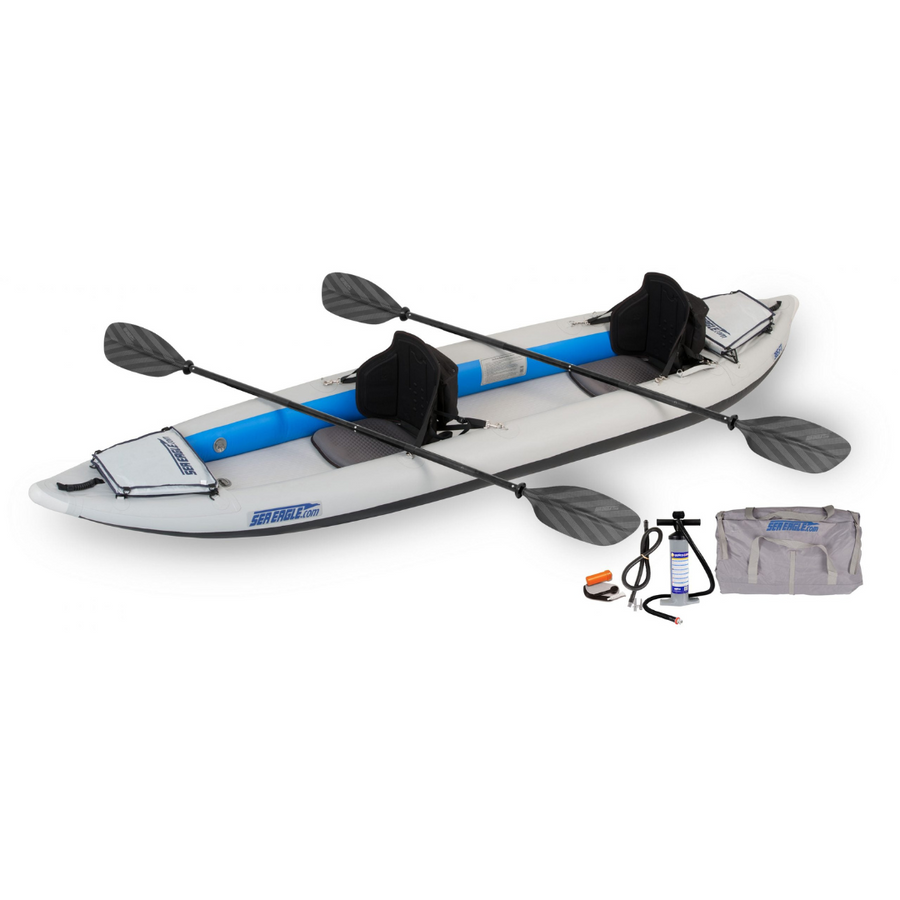
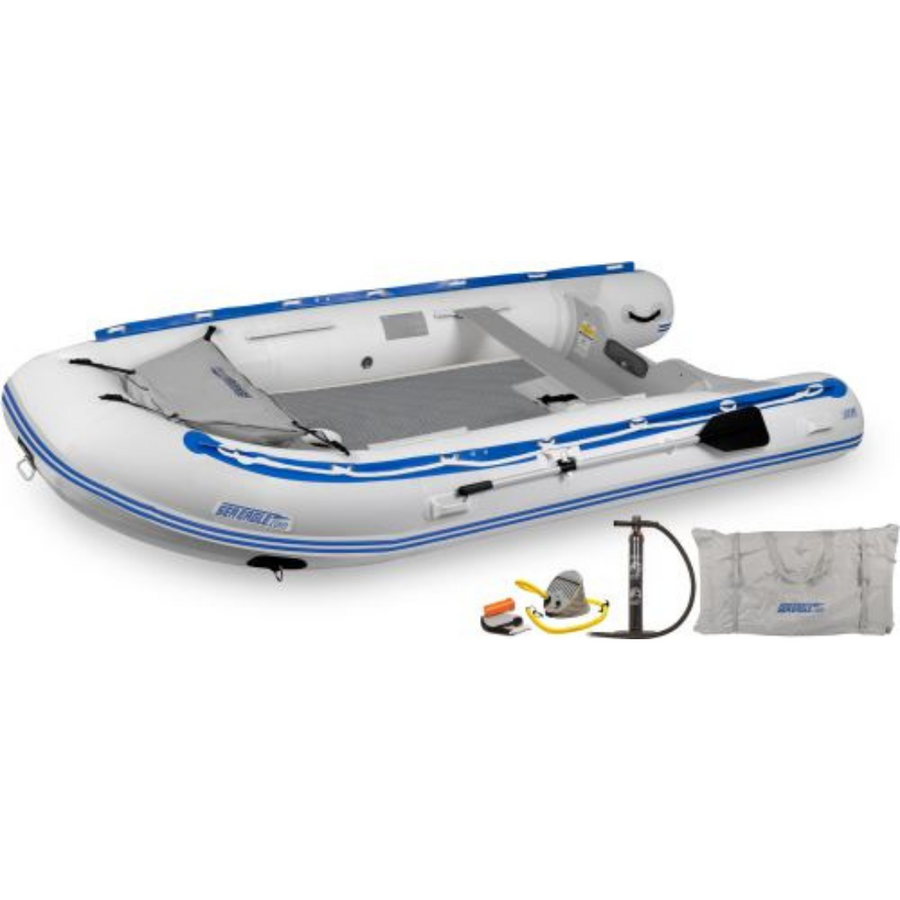
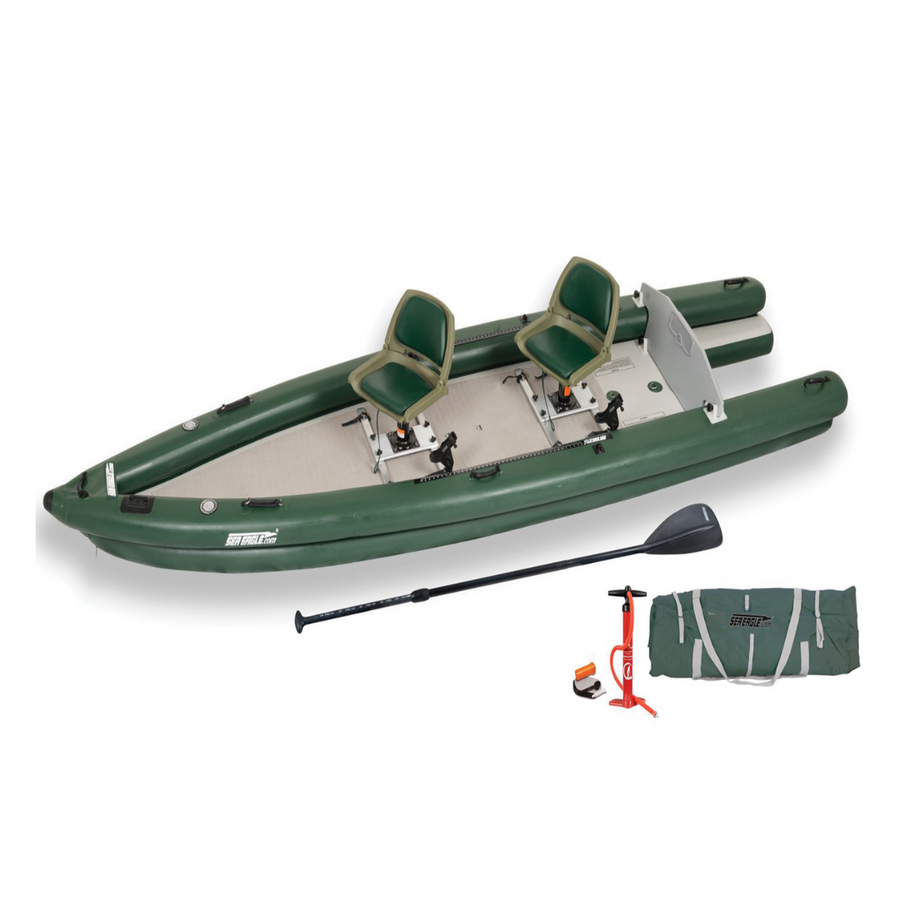
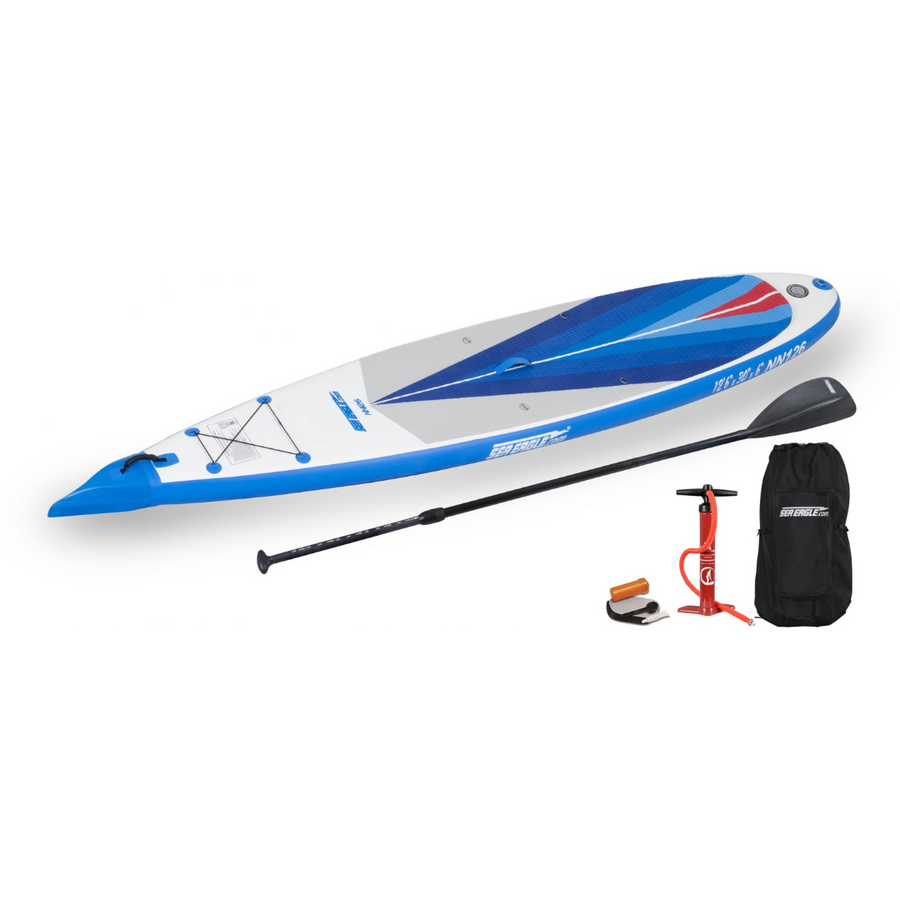
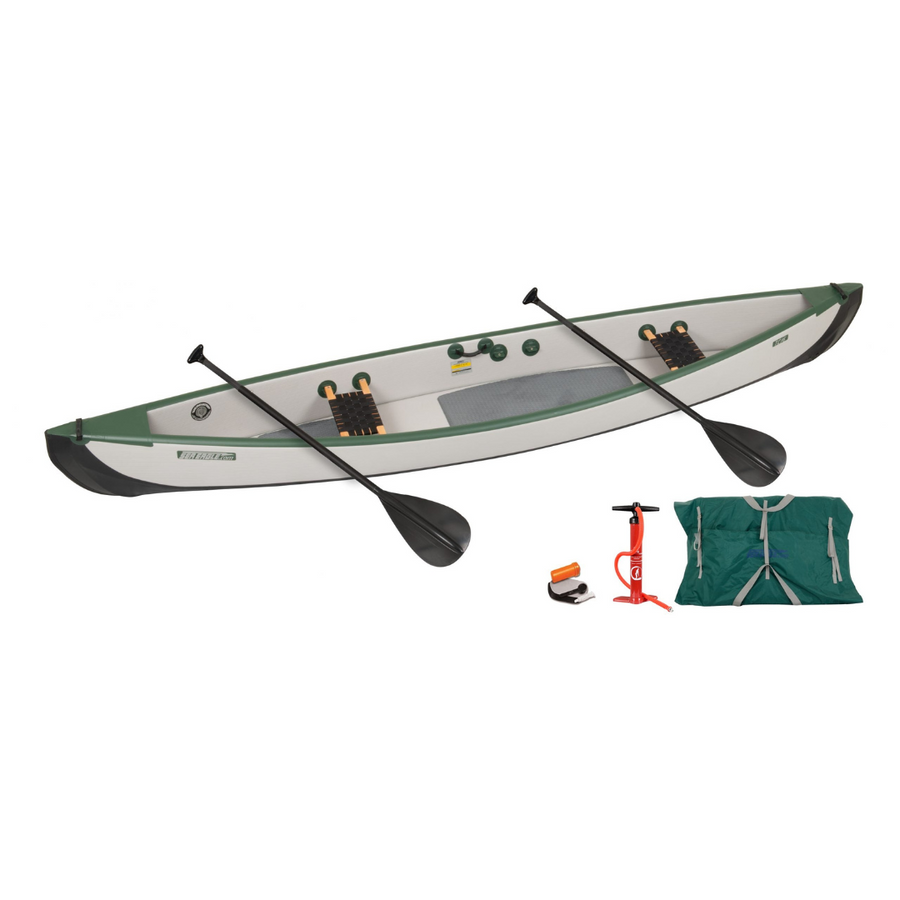
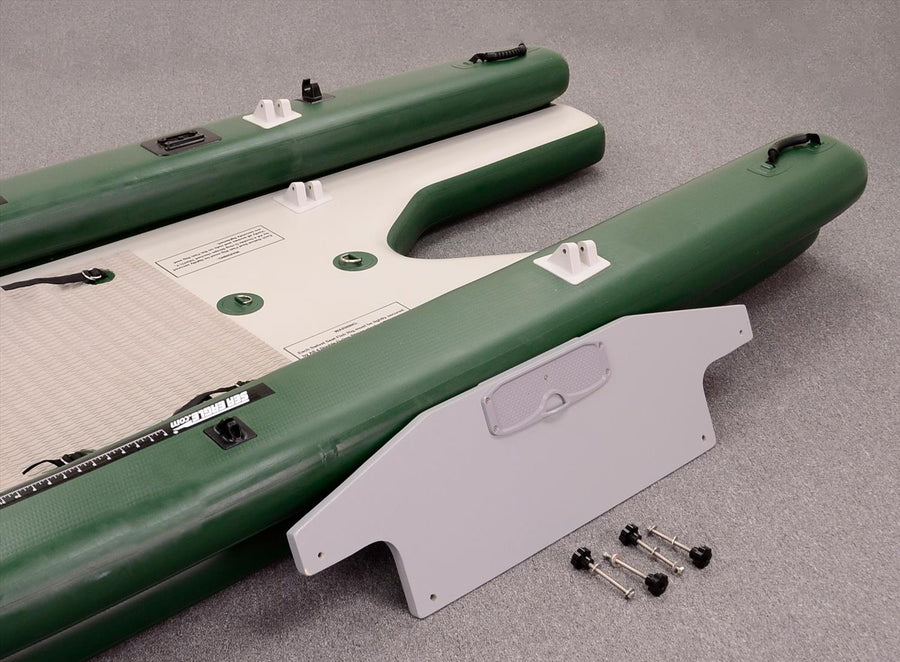


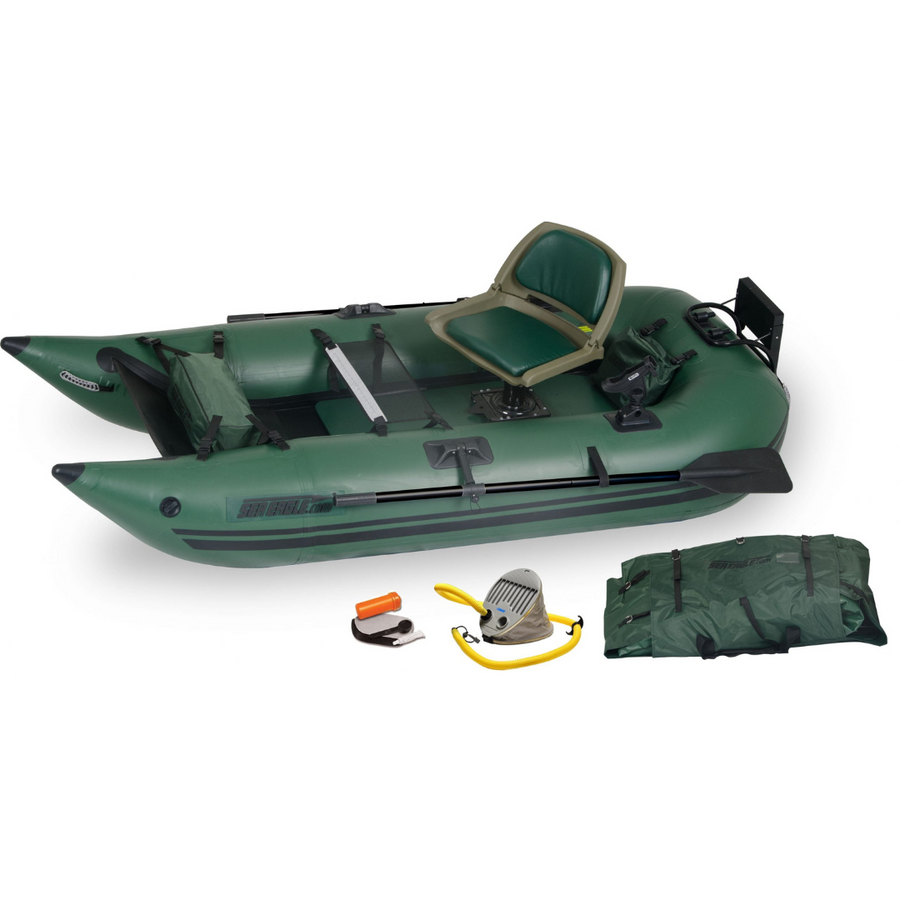
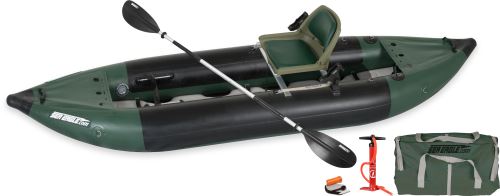
Leave a comment